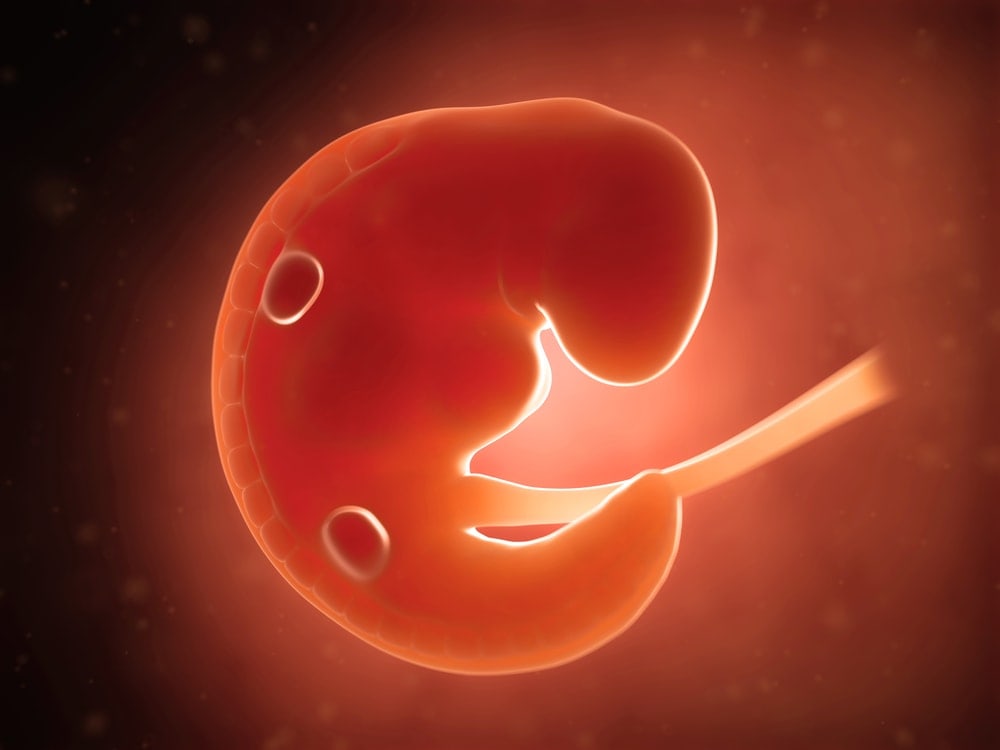The First Trimester of Pregnancy
Week 1 & 2 – Gestational Age
Your menstrual period has just ended, and your body is getting ready for ovulation. For most women, ovulation takes place about 11 – 21 days from the first day of the last period. During intercourse, several hundred million sperms are released in the vagina. Sperm will travel through the cervix and into the fallopian tube.
If conception takes place, the sperm penetrates an egg and creates a single set of 46 chromosomes called a zygote, which is the basis for a new human being. The fertilized egg spends a couple of days traveling through the fallopian tube toward the uterus, dividing into cells; it is called a morula. The morula becomes a blastocyst and will eventually end up in the uterus. Anywhere from day 6-12 after conception, the blastocyst will imbed into the uterine lining and begin the embryonic stage.
Week 3 – Gestational Age (Fetal Development – Week 1)
The embryo is going through a lot of basic growth at this time, with the beginning development of the brain, spinal cord, heart, and gastrointestinal tract.
Week 4 & 5 – Gestational Age (Fetal Development – Weeks 2 & 3)
Arm and leg buds are visible, but not clearly distinguishable. The heart is now beating at a steady rhythm. The placenta has begun to form and is producing some important hormones including hCG. There is a movement of rudimentary blood through the main vessels. The early structures that will become the eyes and ears are forming. The embryo is a ¼ inch long by the end of these weeks.
Week 6 – Gestational Age (Fetal Development – Week 4)
The formation of the lungs, jaw, nose, and palate begin now. The hand and feet buds have webbed structures that will become the fingers and toes. The brain is continuing to form into its complex parts. A vaginal ultrasound can possibly detect an audible heartbeat at this time. The embryo is about a ½ inch in length.
Week 7 – Gestational Age (Fetal Development – Week 5)
At 7 weeks gestation, every essential organ has begun to form in the embryo’s tiny body, even though it still weighs less than an aspirin. The hair and nipple follicles are forming, and the eyelids and tongue have begun formation. The elbows and toes are more visible as the trunk begins to straighten out.
Week 8 – Gestational Age (Fetal Development – Week 6)
The ears are continuing to form externally and internally. Everything that is present in an adult human is now present in the small embryo. The bones are beginning to form, and the muscles can contract. The facial features continue to mature, and the eyelids are now more developed. The embryo is about 1 inch long and is the size of a bean.
Weeks 9 thru 13 – Gestational Age (Fetal Development – Weeks 7 thru 11)
At 10 weeks, the embryo is at the end of the embryonic period and begins the fetal period. The fetus has grown to about 3 inches in length and weighs about an ounce. The genitalia has clearly formed into male or female, but still can not be seen clearly on an ultrasound. The eyelids close and will not reopen until the 28th week of pregnancy. The fetus can make a fist, and the buds for baby teeth appear. The head is nearly half the size of the entire fetus.






